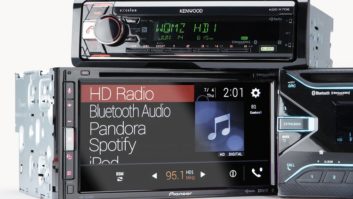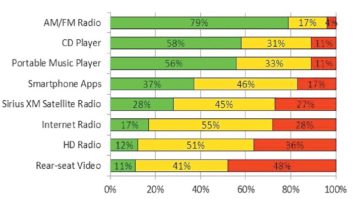The Ipods are coming
Sep 1, 2004 12:00 PM, By Chriss Scherer, editor
I am not a typical radio listener, and neither are you. We work closely to radio. I may no longer have keys to a transmitter site, but I still listen critically. Whether it’s thinking about how I would tweak a processor setting or determining the possible reason for that last on-air glitch, when I listen to the radio I know what is going on and why. The average listener does not, nor does he care.
The listener wants to be entertained or informed. Unfortunately for radio, the venues available to a listener have increased. Radio market shares may appear to be stable, but while the percentage of an audience listening to a station remains the same, the size of that audience is shrinking.

The typical radio user listens because he likes the current song or is interested in the topic being discussed. If he doesn’t like the next song or topic, he changes the station. If he is loyal to a station, he’ll be back. If he’s a button-pusher looking for instant gratification, who knows where he’ll go next. It’s this tendency to seek other options that continues to erode the radio audience.
I’m guilty of some of this button pushing. I have a few favorite stations in Kansas City, and when I want something else � or something not being played on the radio � I turn to my CD player. I don’t have a portable media player. I always thought that taking the time to load music into a device so that I could listen to it anywhere at anytime was an unnecessary practice. Besides, I like the spontaneity of radio. You don’t know what’s next (although with some formats you have a good chance of guessing).
It’s this spontaneity that always put radio on top for me. But this is no longer the exclusive ability of terrestrial radio. Satellite radio channels can provide this spontaneity across 100 channels. That’s a large palette from which to choose. Listeners like the spontaneity of radio, but they also like the ability to have some control over it as well.
That’s where the portable media player fits in so well. My friend owns a unit that stores nearly 5,000 songs or 330 hours of audio at a decent encoding rate. This player, about the size of a deck of cards, holds his entire CD collection. My entire collection exceeds this capacity, but I can’t imagine listening to everything in my collection in a continuous run.
My friend uses his player all the time. Not owning one, I assumed that he would have to set playlists every day to begin his listening experience. Sometimes he does. Most of the time he selects a random play mode, which has several variations. Yesterday he chose to listen to a single artist all day.
I asked him about loading material into the unit. For me, taking the time to transfer 300 CDs sounds like cruel punishment. Using his desktop PC, he ripped the CDs and then loaded them through the player’s USB connection. The time investment is actually minimal. A few mouse clicks to start the process and then he walks away. Simple. The time to program the unit for his next listening session is also usually done during downtime, such as waiting in line.
The role of establishing technology usage trends is normally left to a younger crowd. With so much technology firmly planted, radio is not only losing the 14-year-old, we are now losing the 30-somethings and more. My friend is now a minor member of the radio listening crowd, thanks to his exposure to the new competition for radio.
Entertainment on demand, personal media players, broadband and satellite delivery, and other yet-to-be invented technologies will continue to reduce the size of the radio listening audience. The added capabilities of digital radio can slow this erosion and maybe even stop it. Radio’s long-term survival depends on radio joining the modern age and becoming an active player once again.
Send comments to: E-mail:[email protected]
Fax:913-967-1905









